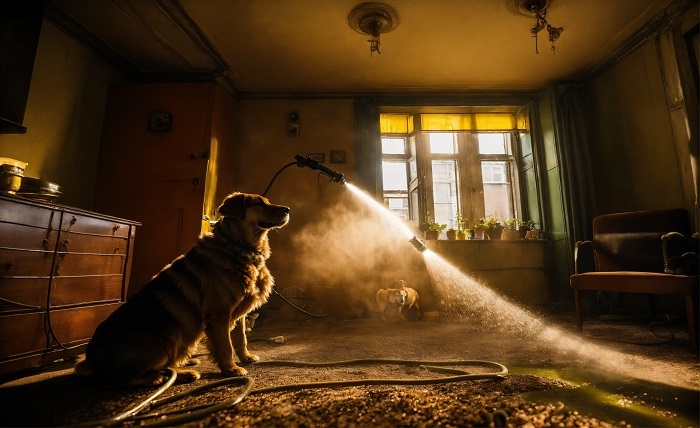The Complete Manual for Taking Care of Your Pet

Having a pet might be among life’s most fulfilling endeavors. Our animal partners offer us comfort, affection, and company without conditions. It is your duty as a pet owner to give your animal the greatest care possible for their wellbeing. Everything you require to properly care for your dog, cat, or other small animal is included in this extensive guide.
Selecting the Ideal Pet
Selecting the kind of pet that best fits your lifestyle is the first step. Compared to cats, dogs need more space, exercise, and care. Long stretches of time spent alone are not conducive to any of them. Small mammals that thrive on interaction, such as rabbits and guinea pigs, require spacious habitats. Make sure the pet you choose will receive the right amount of activity, nutrition, shelter, and grooming. Adopting from a shelter can save lives; but, if you choose to work with a breeder, make sure you choose a reputable one.
Setting Up Your House
Before bringing your new buddy home, make sure your house is pet-proof. Seek out and remove any potential hazards, such as exposed wires, poisonous plants, ingestible loose objects, and escape routes. There should be areas set apart for food, water, sleeping, and waste disposal for both dogs and cats. Rodents and rabbits require spacious enclosures with places to hide. Provide enough food for your pet and set aside spaces for playing, eating, and potty training. Preparing everything in advance facilitates a seamless transfer for both the pet and the owner.
Providing a Healthy Diet
Providing a wholesome, species-appropriate diet for your pet is one of your most important responsibilities as their owner. Animals differ in what they require to eat. Find out what and how much food is appropriate for your pet by doing some research. Give your pets premium commercial food that is appropriate for their age, breed, and level of activity. Treats can be added in moderation. Never fail to supply clean, fresh water. For unique dietary requirements, speak with your veterinarian. To make sure the diet promotes optimal health, keep an eye on your pet’s food consumption, energy level, weight, and waste elimination.
Cleaning and Grooming
Regular pet grooming maintains their appearance, health, and cleanliness. Regular brushing will reduce shedding and help avoid matting in cats and dogs. As needed, cut your nails. Examine your eyes and ears for discharge. Use dental chews or brush your pet’s teeth. Wash and use shampoo when unclean. Rodents and rabbits need to have their nails trimmed and brushed occasionally. Use only products made especially for your pet. Trash and rubbish should be disposed of promptly in covered containers. Launder bedding frequently. Scrub living areas, toys, and food dishes very well. Illness is avoided and pests are decreased by cleanliness.
Offering Plenty of Playtime and Exercise
Pets not only need basic necessities but also exercise and mental stimulation. Every day, take your dogs for vigorous walks and engage them in games like fetch. Fake mice and laser pointers are excellent cat toys. Small pets like exercise wheels, and rabbits love to move around in supervised indoor environments. To make things interesting, rotate the toys. Inadequate mental and physical stimulation can lead to destructive behavior in pets. Make the most of your workout time to socialize and train. Play should always be supervised, and safety measures should be used.
Creating a Fixed Schedule
Pets need consistency and routine to flourish. Feed meals, take daily walks, and engage in play at roughly the same times. Observe regulations and instruction consistently. Make plans for your pet’s care throughout extended workdays or travels. Keeping your pet’s routines regular reduces stress and facilitates training. Because they dislike having their schedules disturbed, dogs and cats may become agitated. If evolving circumstances in your life require it, make small changes.
Offering Health and Dental Services
The health of your pet is your responsibility. Set up yearly examinations with your veterinarian. Ensure that all vaccines are up to date. Ask your veterinarian to recommend monthly tick, flea, and heartworm prevention. Aim for timely veterinarian care and keep an eye out for any indications of disease or injury. Pet grooming can be done at home, but for intricate trimming conditions, seek expert assistance. Benefit from dental cleanings. Unless you intend to responsibly procreate, spay and neuter your pet by the right age. Prompt medical care increases life expectancy and quality of life.
Education for Your Animal
The secret to effective training is perseverance and good reinforcement. Reward positive conduct with prizes and compliments. As soon as you see unwanted behavior, gently but firmly correct it. Start the potty training process right away for cats and puppies. Basic obedience instructions like “come,” “stay,” and “sit” should be taught to dogs. Redirect biting, gnawing, and other undesirable habits. Young pets should be regularly and safely socialized. For problems like hostility or separation anxiety, think about receiving expert instruction. Pets with good training make excellent community members and companions.
Showing Love to Your Pet
While providing for your pet’s physical requirements is important, nothing will ever fully replace a sincere love and bond. Take plenty of time to play, cuddle, groom, and engage with each other. Learn about the distinct characteristics of your pet. To boost confidence, gently introduce novel experiences. Remain composed and impartial when enforcing rules. When it’s appropriate, involve your pet in family activities. When you are unable to bring your pet with you, request a pet sitter. Savor the unique bond that can only be formed with a cherished pet!
Final Thoughts
To summarize, taking good care of your pet involves planning, study, tolerance, and love. The welfare of our animal companions depends on us. You can have a happy, healthy pet that enriches your life if you provide the proper nutrition, environment, routine, training, exercise, medical attention, grooming, and care. The affection you’ll receive without conditions is certainly worth the effort!
FAQ
How much should I set aside for the costs of caring for my pet?
A dog or cat should cost between $500 and $1,500 a year on average. The first year’s costs are higher because of things like training, spay/neuter, and beginning supplies. Spend extra on puppies and kittens. The annual cost of other pets, such as guinea pigs or rabbits, is $200–500. The cost of exotic pets is higher. Always keep money set aside for unforeseen medical expenses.
What is a good diet for my pet?
Give your pet premium, name-brand food that is appropriate for its breed, age, and activity level. Observe the portion guidelines. Add a few special snacks as a supplement. Fresh water should always be available. If you have any issues or require special foods, speak with your veterinarian.
How do I make my house pet-proof?
Look for dangers at eye level with your pet. Organize stray items. Cover up cables. Take out any toxic indoor plants. Put in baby gates. Keep medicines and chemicals locked up. Trash cans should be covered. When you are unable to supervise, think about using a container or small safe areas. Make gates and fencing outdoors escape-proof.
How much exercise is necessary for my pet?
Most pets require 30 to 60 minutes of exercise each day. Breeds that are young, active, or working require more. Take dogs for at least a mile or two every day. Interactive play and “hunting” help cats stay in shape. For safety, always keep an eye on outside time. Small animals and rabbits require space to run and climb. Adapt to your pet’s need.
What are the telltale symptoms that my pet is sick?
Coughing, eye/nose discharge, lethargy, changes in appetite, weight fluctuations, limping, meowing, hair loss, diarrhea, and vomiting. Watch carefully, and report any concerns as soon as possible to your veterinarian. Treat yourself as soon as possible!
Does my pet really need to see a veterinarian for preventive care?
Absolutely! Your pet’s chances of living a long, healthy life are increased with preventive treatment. Not optional, but necessary are annual examinations, heartworm prevention, flea/tick medicine, and vaccinations. Additionally, they enable the early detection of health problems before they worsen.
How can I acclimatize my pet to being groomed at home?
Grooming should be enjoyable and stress-free from an early age. Both during and after, give rewards and praise. To make tools seem less scary, introduce them gradually. Allow your pet to first sniff the goods. Proceed cautiously and cease if your pet appears upset. In between thorough professional grooming, practice.
Which cleaning supplies are safe to use in the presence of pets?
Steer clear of harsh chemicals. Use bleach diluted or cleansers suitable for pets. Rinse dishes and bedding in hot, soapy water. Clean up spills right away. Regularly mop and vacuum. Spray insecticides away from pets at all times. Consult your veterinarian for advice on pet-safe disinfectants.
How can I prevent my pet from eating things to ruin?
Make sure your pet receives enough mental and physical stimulation. To keep kids from getting bored, provide appropriate chew toys that you rotate often. When you are unable to supervise, use a crate. Store or cover enticing objects. Firmly correct someone who is chewing on something inappropriate. If necessary, use anxiety medication.
While I’m away from home, my pet causes mess.
Pets under the age of six months are not able to contain their urine or feces for extended periods of time. Employ containment spaces or boxes. Take outside as soon as you can after being confined, and as often as you can. Reward entering the allotted space. Use an enzyme cleaner to clean up any accidents. Continue your training and attentiveness if there are no medical concerns. Seek expert advice if there is no improvement.
Why does my pet act aggressively toward other animals or pull or bark while out for walks?
These actions indicate that your pet requires further mental stimulation, training, and socializing. Be consistent in your training and begin early. Appropriately use rewards, compliments, and reprimands. Seek expert assistance if you have severe behavioral problems. Avoid




